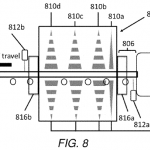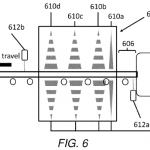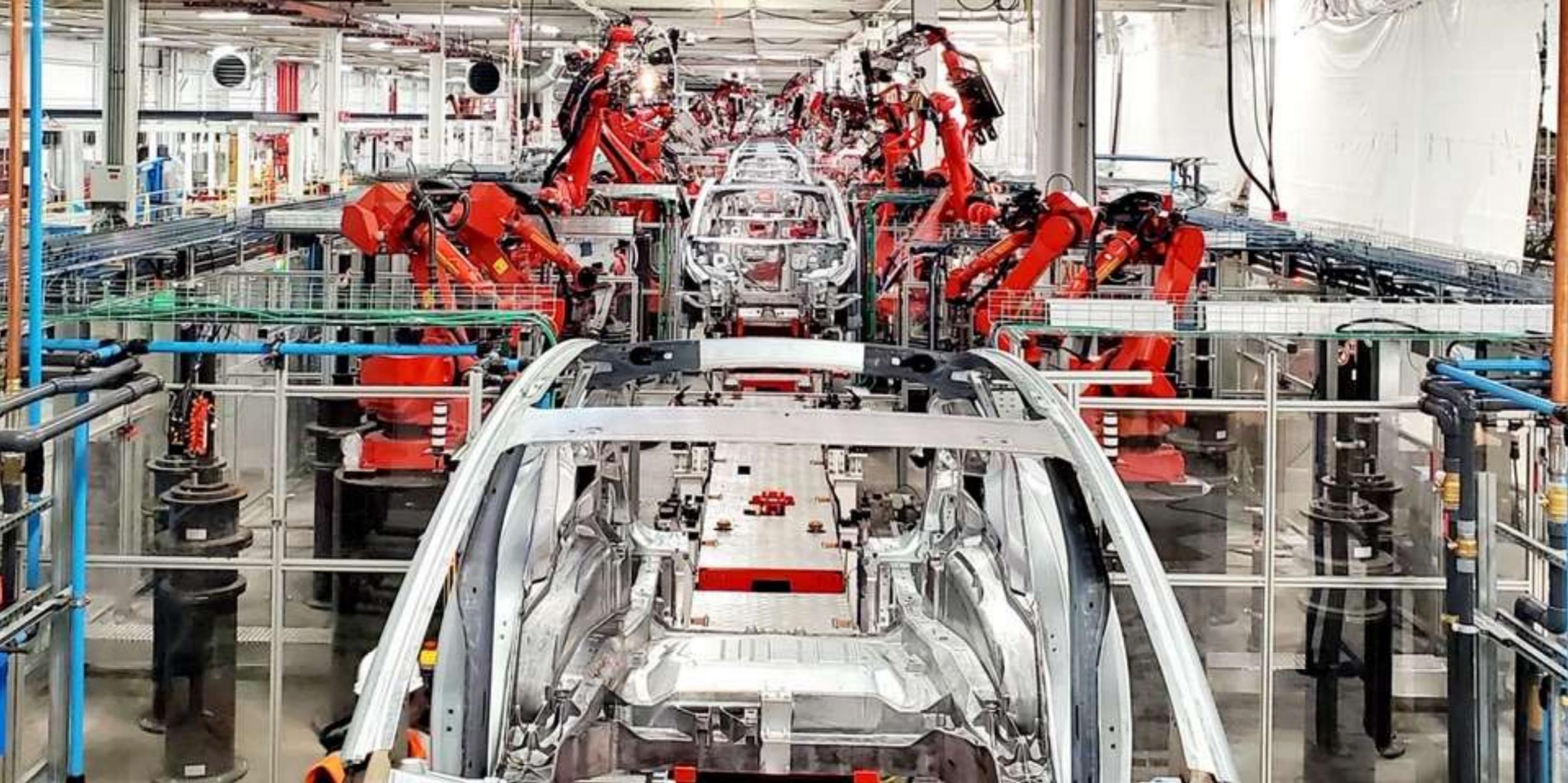
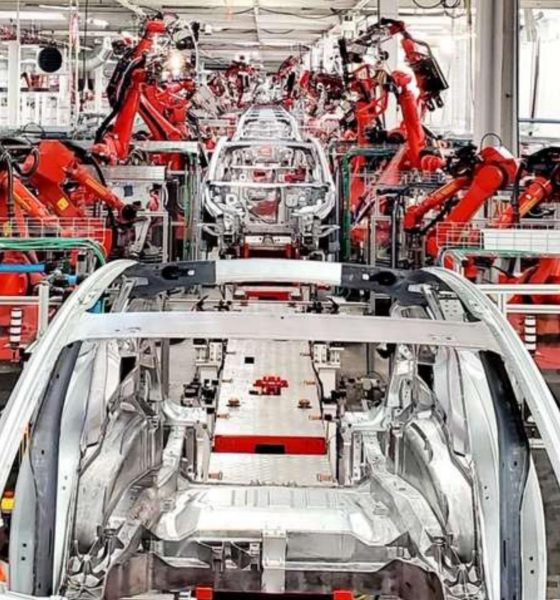
Investor's Corner
Tesla patents aluminum “spray quench” process for molecular-level strengthening
Tesla has submitted a patent that describes a new, more effective cooling process for manufacturing high-strength aluminum components to be used in its product line.
The patent entitled, “System and Method for Facilitating Pulsed Spray Quench of Extruded Objects”, describes a quenching process that aims to increase the strength, rigidity, and energy absorption of aluminum alloy components. A multi-way spray nozzle system would cool extruded aluminum with an atomized spray of liquid.
“A system includes a billet die at a proximal end configured to accept a billet and form an extrudate, a quench chamber located adjacent to the billet die for receiving the extrudate and comprising at least one pulsed width modulation (PWM) atomizing spray nozzle and a control module in communication with the at least one PWM atomizing spray nozzle and configured to independently control a liquid pressure, a gas pressure, a spray frequency, a duty cycle and flow rate of each at least one PWM atomizing spray nozzle,” reads the patent abstract.
Vehicles today use 6XXX aluminum alloys, which make up the front and rear bumpers, side and back steps, and knee bolsters of a car, the Kobelco Technology Review stated. Tesla also indicates within the patent that it uses 6XXX alloys for its vehicles. After these parts are extruded, they enter a quenching process, which is simply the process of cooling the metal after it has been heated.
Currently, Tesla utilizes a quenching process that involves cooling recently extruded aluminum alloys by soaking the parts in water. This process of quenching is recognized as “quick cooling.” While other cooling means are available, such as air cooling and furnace cooling, soaking the parts in water is the most time-effective method for automotive manufacturing.
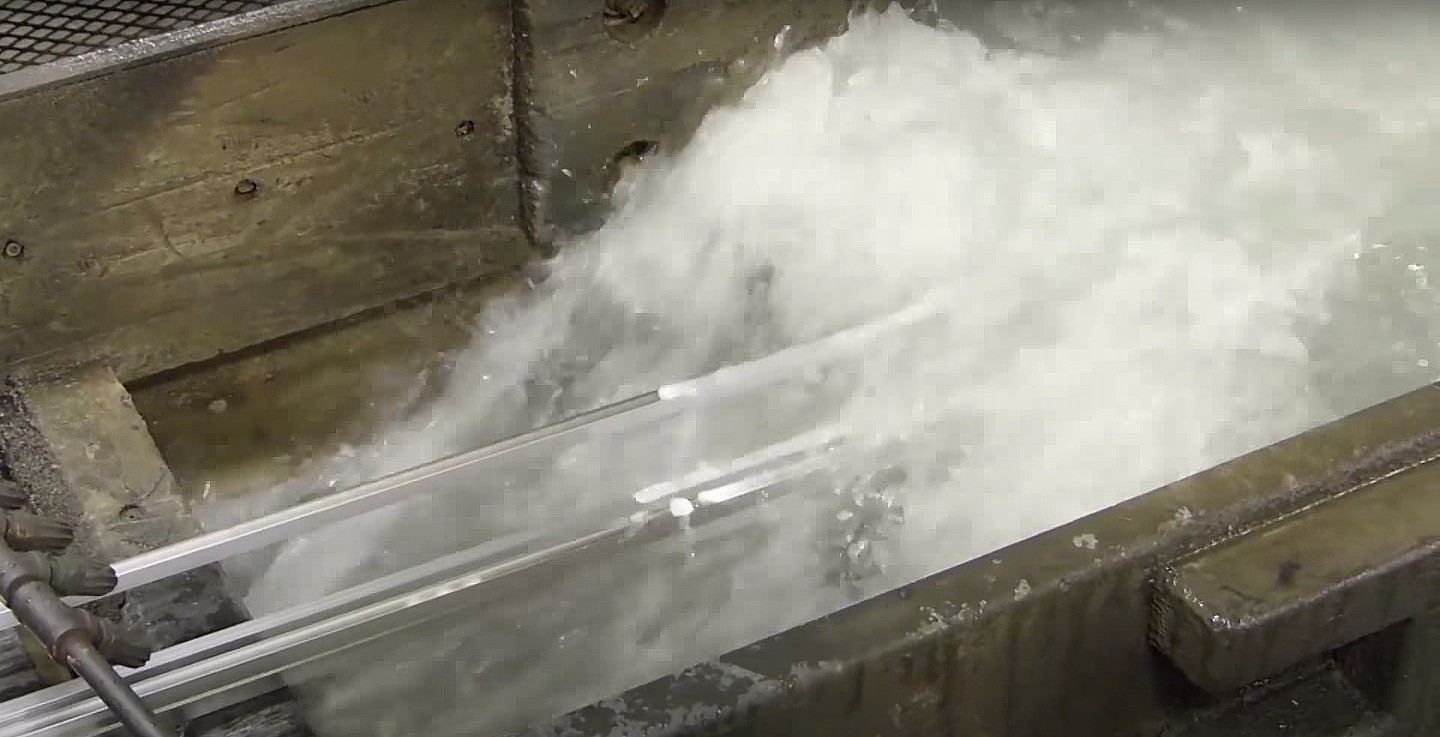
However, Tesla’s patent recognizes the adverse effects that quick cooling aluminum alloy parts can have on the structural integrity of the metal. Quick-cooling can not only lead to deformation and warping of metal parts, but things can change chemically as well.
Magnesium silicide, or Mg2Si, is present in these aluminum alloy parts, and quick cooling them can inhibit the compound’s ability to set in the metal. Without the proper setting of Mg2Si by quick-cooling the aluminum alloy in water, the metal requires a higher extrusion pressure and becomes more sensitive to heat, according to Light Metals 2014. The combination of these two properties can effectively compromise the mechanical properties of the final product, making the frame of the vehicle lose strength through the manufacturing process.
Tesla plans to utilize a multi-way spraying system to cool extruded aluminum parts, eliminating the soaking process that is used by so many manufacturers of aluminum alloy. In the patent, the company describes a quenching system that would spray newly extruded metals at varying rates depending on the size of the part. Between one half-gallon and 10 gallons of water per minute would cool the metal in question.
- Tesla’s described cooling process. (Credit: U.S. Patent Office)
- Tesla’s described cooling process. (Credit: U.S. Patent Office)
Two pyrometers would be placed at both the proximal and distal ends of the quench chamber. These would hold the responsibility of maintaining the metal’s temperature through the quenching process. The pyrometers would communicate with the system to ensure proper cooling temperatures, making sure the aluminum does not cool too quickly, allowing the Mg2Si to set. In conjunction with the temperature control, spray frequency, liquid pressure, gas pressure, and flow rate will also be monitored to ensure maximum strength after extradition is complete.
Tesla’s recognition of the flaws in quick-cooling extruded metals indicates the company’s realization that increased strength of a car’s frame could improve with a more efficient cooling technique.
In the teardown of the Model Y, Sandy Munro complimented Tesla’s use of what he called the “aluminum rear crush plate.” The piece is located at the trunk hatch and is designed to fold in the event of a rear-impact. The part saves the sides of the body from being compromised in a crash, which can ultimately total the vehicle if the chassis bends excessively.
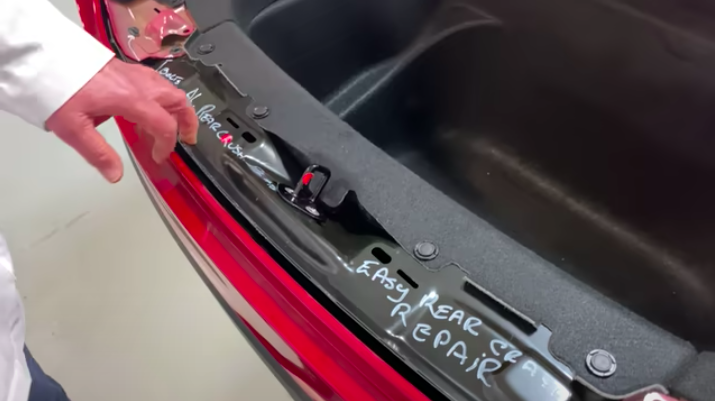
While the crush plate is durable and prevents excessive damage to the body of the Model Y, the quick-cooling process used during manufacturing could ultimately make the crush plate less sustainable than what it could be. Not to mention, the front bumper, rear bumper, side and back steps, and knee bolsters are also made of aluminum. Using a different cooling technique could eventually lead to an even safer Tesla vehicle, which already has many five-star crash safety ratings from several organizations located around the world.
Read Tesla’s patent for a new aluminum cooling process below.
Tesla SYSTEM AND METHOD FOR FACILITATING PULSED SPRAY QUENCH OF EXTRUDED OBJECTS by Joey Klender on Scribd

Investor's Corner
Tesla stock closes at all-time high on heels of Robotaxi progress

Tesla stock (NASDAQ: TSLA) closed at an all-time high on Tuesday, jumping over 3 percent during the day and finishing at $489.88.
The price beats the previous record close, which was $479.86.
Shares have had a crazy year, dipping more than 40 percent from the start of the year. The stock then started to recover once again around late April, when its price started to climb back up from the low $200 level.
This week, Tesla started to climb toward its highest levels ever, as it was revealed on Sunday that the company was testing driverless Robotaxis in Austin. The spike in value pushed the company’s valuation to $1.63 trillion.
Tesla Robotaxi goes driverless as Musk confirms Safety Monitor removal testing
It is the seventh-most valuable company on the market currently, trailing Nvidia, Apple, Alphabet (Google), Microsoft, Amazon, and Meta.
Shares closed up $14.57 today, up over 3 percent.
The stock has gone through a lot this year, as previously mentioned. Shares tumbled in Q1 due to CEO Elon Musk’s involvement with the Department of Government Efficiency (DOGE), which pulled his attention away from his companies and left a major overhang on their valuations.
However, things started to rebound halfway through the year, and as the government started to phase out the $7,500 tax credit, demand spiked as consumers tried to take advantage of it.
Q3 deliveries were the highest in company history, and Tesla responded to the loss of the tax credit with the launch of the Model 3 and Model Y Standard.
Additionally, analysts have announced high expectations this week for the company on Wall Street as Robotaxi continues to be the focus. With autonomy within Tesla’s sights, things are moving in the direction of Robotaxi being a major catalyst for growth on the Street in the coming year.
Elon Musk
Tesla needs to come through on this one Robotaxi metric, analyst says
“We think the key focus from here will be how fast Tesla can scale driverless operations (including if Tesla’s approach to software/hardware allows it to scale significantly faster than competitors, as the company has argued), and on profitability.”

Tesla needs to come through on this one Robotaxi metric, Mark Delaney of Goldman Sachs says.
Tesla is in the process of rolling out its Robotaxi platform to areas outside of Austin and the California Bay Area. It has plans to launch in five additional cities, including Houston, Dallas, Miami, Las Vegas, and Phoenix.
However, the company’s expansion is not what the focus needs to be, according to Delaney. It’s the speed of deployment.
The analyst said:
“We think the key focus from here will be how fast Tesla can scale driverless operations (including if Tesla’s approach to software/hardware allows it to scale significantly faster than competitors, as the company has argued), and on profitability.”
Profitability will come as the Robotaxi fleet expands. Making that money will be dependent on when Tesla can initiate rides in more areas, giving more customers access to the program.
There are some additional things that the company needs to make happen ahead of the major Robotaxi expansion, one of those things is launching driverless rides in Austin, the first city in which it launched the program.
This week, Tesla started testing driverless Robotaxi rides in Austin, as two different Model Y units were spotted with no occupants, a huge step in the company’s plans for the ride-sharing platform.
Tesla Robotaxi goes driverless as Musk confirms Safety Monitor removal testing
CEO Elon Musk has been hoping to remove Safety Monitors from Robotaxis in Austin for several months, first mentioning the plan to have them out by the end of 2025 in September. He confirmed on Sunday that Tesla had officially removed vehicle occupants and started testing truly unsupervised rides.
Although Safety Monitors in Austin have been sitting in the passenger’s seat, they have still had the ability to override things in case of an emergency. After all, the ultimate goal was safety and avoiding any accidents or injuries.
Goldman Sachs reiterated its ‘Neutral’ rating and its $400 price target. Delaney said, “Tesla is making progress with its autonomous technology,” and recent developments make it evident that this is true.
Investor's Corner
Tesla gets bold Robotaxi prediction from Wall Street firm
Last week, Andrew Percoco took over Tesla analysis for Morgan Stanley from Adam Jonas, who covered the stock for years. Percoco seems to be less optimistic and bullish on Tesla shares, while still being fair and balanced in his analysis.

Tesla (NASDAQ: TSLA) received a bold Robotaxi prediction from Morgan Stanley, which anticipates a dramatic increase in the size of the company’s autonomous ride-hailing suite in the coming years.
Last week, Andrew Percoco took over Tesla analysis for Morgan Stanley from Adam Jonas, who covered the stock for years. Percoco seems to be less optimistic and bullish on Tesla shares, while still being fair and balanced in his analysis.
Percoco dug into the Robotaxi fleet and its expansion in the coming years in his latest note, released on Tuesday. The firm expects Tesla to increase the Robotaxi fleet size to 1,000 vehicles in 2026. However, that’s small-scale compared to what they expect from Tesla in a decade.
Tesla expands Robotaxi app access once again, this time on a global scale
By 2035, Morgan Stanley believes there will be one million Robotaxis on the road across multiple cities, a major jump and a considerable fleet size. We assume this means the fleet of vehicles Tesla will operate internally, and not including passenger-owned vehicles that could be added through software updates.
He also listed three specific catalysts that investors should pay attention to, as these will represent the company being on track to achieve its Robotaxi dreams:
- Opening Robotaxi to the public without a Safety Monitor. Timing is unclear, but it appears that Tesla is getting closer by the day.
- Improvement in safety metrics without the Safety Monitor. Tesla’s ability to improve its safety metrics as it scales miles driven without the Safety Monitor is imperative as it looks to scale in new states and cities in 2026.
- Cybercab start of production, targeted for April 2026. Tesla’s Cybercab is a purpose-built vehicle (no steering wheel or pedals, only two seats) that is expected to be produced through its state-of-the-art unboxed manufacturing process, offering further cost reductions and thus accelerating adoption over time.
Robotaxi stands to be one of Tesla’s most significant revenue contributors, especially as the company plans to continue expanding its ride-hailing service across the world in the coming years.
Its current deployment strategy is controlled and conservative to avoid any drastic and potentially program-ruining incidents.
So far, the program, which is active in Austin and the California Bay Area, has been widely successful.
